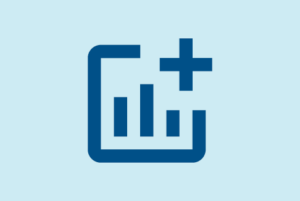The Centers for Medicare & Medicaid Services (CMS) has issued an interim final rule revising regulatory requirements related to the COVID-19 public health emergency. Among the provisions finalized, CMS establishes new requirements in the hospital and critical access hospital Conditions of Participation that require hospitals to report certain COVID-19-related data elements to the Department of Health and Human Services (HHS) on a daily basis.
The final rule will be effective upon publication in the Federal Register, and CMS will accept comments for 60 days after publication.
Under the final rule, hospitals that fail to consistently report data throughout the duration of the public health emergency could be subject to termination from the Medicare and Medicaid programs. Currently, hospitals have the option of voluntarily reporting these data either directly to HHS through its TeleTracking portal or through CHA’s COVID-19 Tracking Tool, which the California Department of Public Health then submits to HHS on hospitals’ behalf.
The final rule also includes new requirements for long-term care facilities, revising infection-control regulations to require nursing homes to routinely test staff for COVID-19. CMS recommendations for the frequency of staff testing will be based on the degree of community spread. In associated guidance provided to state survey agencies, CMS specified that skilled-nursing facilities (SNFs) located in a county with a positivity rate of less than 5% will be required to test staff once per month, while SNFs in counties with higher positivity rates will be required to test staff more frequently: Once per week for counties with rates between 5% and 10% and two times per week in counties with a positivity rate greater than 10%.
Facilities that do not comply with the new requirements will be cited for non-compliance and may face enforcement sanctions based on the severity of the noncompliance, such as civil money penalties in excess of $400 per day or over $8,000 for an instance of noncompliance. CMS also announced that additional Provider Relief Funds will be allocated to nursing homes to offset the cost of increased testing.
The interim final rule also implements provisions of the Coronavirus Aid, Relief, and Economic Security Act that require laboratories to report COVID-19 test results daily to the HHS Secretary. All laboratories conducting COVID-19 testing and reporting patient-specific results — including hospital labs, nursing homes, and other facilities conducting COVID-19 testing — will be required to comply. Failure to comply with these requirements could result in civil monetary penalties of $1,000 a day for the first day and $500 a day for each subsequent day.
CMS also revises quality performance programs to reflect blanket extraordinary circumstance exceptions that made reporting of data optional for hospitals under the Hospital-Acquired Conditions Reduction Program, Hospital Value-Based Purchasing (VBP) Program, and Hospital Readmission Reduction Program. Specifically, CMS says it will not use data voluntarily submitted during the first and second quarters of 2020 in calculating performance for these programs.
CMS also says that, in the future, it may propose to not apply payment adjustments in program years where it determines that — as a result of measure reporting exceptions — it has insufficient data to calculate national performance in a reliable manner. In addition, CMS revises the performance period for the fiscal year 2022 skilled-nursing facility VBP program, makes two changes to the Merit-based Incentive Payment System, and clarifies policies for health plans related to how premium discounts offered to enrollees through the end of the year due to the pandemic must be factored into risk adjustment and medical loss ratio data submitted for the 2020 benefit year.



